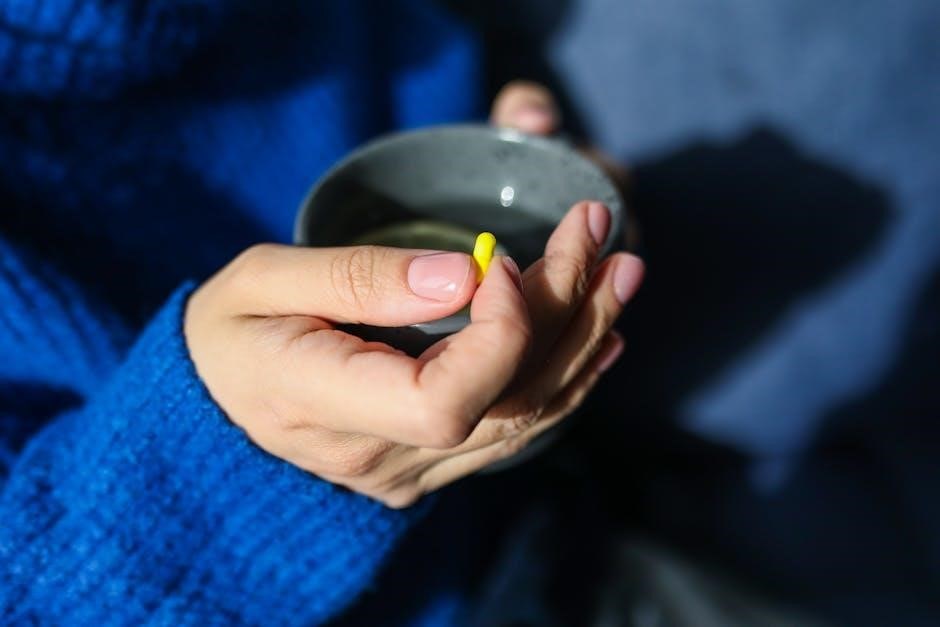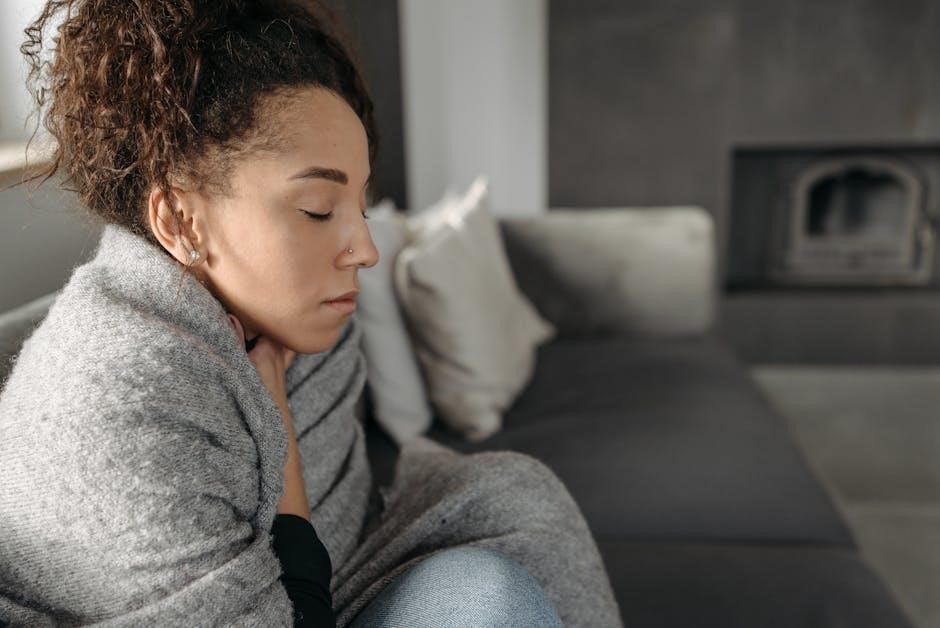Fever 1793, a historical fiction novel by Laurie Halse Anderson, is set during the 1793 yellow fever epidemic in Philadelphia. The PDF version offers easy access to this gripping tale, allowing readers to explore the challenges faced by Mattie Cook and her family. The story blends historical facts with compelling narrative, making it both educational and engaging. The PDF format ensures readability across devices, making it a popular choice for students and history enthusiasts alike.
1.1 Overview of the Book and Its Availability in PDF Format
Fever 1793 by Laurie Halse Anderson is a historical fiction novel set during the 1793 yellow fever epidemic in Philadelphia. The story follows 14-year-old Mattie Cook as she navigates the challenges of the outbreak. The book is widely available in PDF format, making it accessible for readers to download and enjoy on various devices. The PDF version retains the original narrative’s engaging style and historical accuracy, offering a convenient way to explore this gripping tale of survival and resilience during one of America’s darkest public health crises.
1.2 Historical Context of the 1793 Yellow Fever Epidemic
The 1793 yellow fever epidemic devastated Philadelphia, then the nation’s capital, killing thousands. The disease spread rapidly, overwhelming medical resources. The outbreak was linked to mosquitoes breeding in stagnant water, though this cause was unknown at the time. Panic ensued as citizens fled, leaving the sick and dying behind. The epidemic had a profound impact on the city’s social and economic structures, shaping public health responses for future generations and serving as the backdrop for Laurie Halse Anderson’s gripping novel.

Plot Summary of “Fever 1793”
Fever 1793 follows 14-year-old Mattie Cook as she navigates the 1793 yellow fever epidemic in Philadelphia. After her mother falls ill, Mattie must survive and care for her family, learning resilience and responsibility amidst the crisis.
2.1 Key Events in the Novel
In Fever 1793, Mattie Cook, a 14-year-old girl, helps her mother at their family coffeehouse in Philadelphia. When her mother falls ill with yellow fever, Mattie must navigate the chaos of the epidemic. As the disease spreads, Mattie faces loss, separation, and the challenge of survival. She eventually finds her mother alive and reunites with her, emerging stronger and more resilient. These events highlight Mattie’s growth and the devastating impact of the epidemic on the city.
2.2 Setting: Philadelphia in 1793
Philadelphia in 1793 serves as the vibrant yet deadly backdrop for Fever 1793. The city, a bustling port and hub of commerce, is thrown into chaos by the yellow fever epidemic. Narrow streets, crowded markets, and the oppressive summer heat create an environment ripe for disease spread. The setting vividly captures the fear and panic among citizens, the flee of the wealthy, and the struggles of those left behind, immersing readers in the turmoil of 18th-century Philadelphia during its darkest hour.

Historical Context of the 1793 Yellow Fever Epidemic
The 1793 yellow fever epidemic was devastating, with an unknown cause at the time. It led to over 5,000 deaths in Philadelphia, drastically affecting the city.
3.1 Causes of the Epidemic
The 1793 yellow fever epidemic in Philadelphia was initially believed to stem from local sources, such as rotting coffee and bad air, but it actually originated from mosquitoes carrying the virus from the Caribbean. The outbreak was exacerbated by unsanitary conditions, lack of medical knowledge, and the influx of refugees from Haiti. The epidemic caused widespread panic and a high mortality rate, leading to significant changes in public health practices and medical understanding in the years that followed.
3.2 Impact on Philadelphia
The 1793 yellow fever epidemic devastated Philadelphia, then the nation’s capital, killing thousands and displacing many more. The city’s infrastructure collapsed, businesses shuttered, and medical services were overwhelmed. The epidemic led to significant changes in public health policies, including improved sanitation and the establishment of fever hospitals. It also highlighted social inequalities, as the wealthy fled while the poor and marginalized suffered disproportionately. The event left a lasting scar on the city and shaped its future public health strategies.
3.3 Portrayal in the Novel
Laurie Halse Anderson vividly portrays the 1793 yellow fever epidemic in Fever 1793, capturing the panic, suffering, and resilience of Philadelphia’s citizens. Through Mattie Cook’s journey, the novel highlights the personal and societal impact of the epidemic, emphasizing themes of loss, survival, and community. Anderson’s vivid descriptions of the city’s chaos and the characters’ struggles create a compelling narrative that brings the historical event to life, offering readers a poignant and educational glimpse into this tragic period.
Themes and Symbols in “Fever 1793”
Fever 1793 explores themes of survival, resilience, and family bonds, set against the backdrop of a devastating epidemic. The fever symbolizes both disease and societal upheaval, while Mattie’s journey reflects personal growth and community strength, highlighting the novel’s emotional and historical depth.
4.1 Theme of Survival
In Fever 1793, survival is a central theme as characters face the relentless yellow fever epidemic. Mattie Cook’s journey illustrates the physical and emotional struggles of enduring a crisis. The novel highlights how survival requires resilience, resourcefulness, and sacrifice. Mattie’s experiences, from managing the family coffeehouse to coping with loss, underscore the human capacity to persevere in the face of overwhelming adversity. The theme of survival is deeply intertwined with the historical context, offering a vivid portrayal of life during the epidemic.
4.2 Symbolism of Fever
The fever in Laurie Halse Anderson’s Fever 1793 symbolizes chaos, fear, and societal breakdown during the epidemic. It represents the uncontrollable forces of nature and the fragility of life. The fever also serves as a metaphor for Mattie’s personal growth, as she navigates loss, responsibility, and self-discovery; Its presence underscores the themes of resilience and transformation, highlighting how adversity can shape individual and communal identity. The fever’s impact resonates beyond the physical, reflecting the emotional and psychological toll of the crisis.
4.3 Theme of Family and Responsibility
In Fever 1793, the theme of family and responsibility is central to Mattie’s journey. The epidemic forces her to confront the fragility of family bonds and step into roles she never imagined. Caring for her ailing mother and managing the coffeehouse, Mattie learns the weight of responsibility and the strength it requires. Her love for her family drives her actions, even as she faces loss and uncertainty. The novel highlights how crises can transform individuals, fostering growth and a deeper understanding of duty and love.
4.4 Theme of Resilience
Fever 1793 explores resilience through Mattie’s journey amid the yellow fever epidemic. Facing loss, fear, and uncertainty, Mattie discovers inner strength and adaptability. The novel shows how resilience is not just survival but also growth. Mattie learns to navigate a crumbling world, finding hope in despair and emerging stronger. Her story reflects the human capacity to endure and rebuild, offering a powerful message about resilience in the face of overwhelming adversity. This theme resonates deeply, making the novel relatable and inspiring.

Author Background and Inspiration
Laurie Halse Anderson, known for works like Speak and Chains, drew inspiration from the 1793 yellow fever epidemic to craft Fever 1793, blending historical fiction with personal resilience.
5.1 Laurie Halse Anderson’s Background
Laurie Halse Anderson, born in 1961 in Potsdam, New York, grew up with a passion for storytelling. She earned a degree in languages and literature and worked as a journalist and researcher before transitioning to writing novels. Known for her historical fiction and young adult literature, Anderson explores themes of resilience, identity, and social issues. Her works, including Fever 1793, Speak, and Chains, have garnered widespread acclaim for their vivid narratives and historical authenticity.
5.2 Inspiration Behind “Fever 1793”
Laurie Halse Anderson drew inspiration from the historical yellow fever epidemic of 1793 in Philadelphia. She aimed to capture the resilience of victims and survivors, particularly women, during this crisis. The novel reflects her fascination with historical events and their impact on ordinary lives. Anderson’s research into the epidemic and its social effects shaped the story, blending factual history with fictional characters to create a compelling narrative that educates and engages readers about this pivotal moment in American history.

Reception and Impact of the Book
Fever 1793 has been praised by critics for its historical accuracy and emotional depth. It is widely used in schools, making history accessible and engaging for students.
6.1 Critical Reception
Fever 1793 received widespread critical acclaim for its vivid portrayal of the 1793 yellow fever epidemic. Reviewers praised Laurie Halse Anderson’s ability to weave historical facts with compelling storytelling. The novel was highlighted for its emotional depth and its ability to engage young readers with a tragic yet inspiring narrative. Its historical accuracy and relatable characters have made it a favorite in both literary circles and educational settings, further solidifying its reputation as a significant work of historical fiction.
6.2 Educational Use and Curriculum
Fever 1793 is widely used in school curriculums to teach historical fiction and the 1793 yellow fever epidemic. Teachers appreciate its ability to engage students with a compelling narrative while providing historical context. The novel is often paired with educational resources, such as unit studies and discussion guides, to deepen understanding; Its inclusion in classroom settings highlights its value as both a literary work and a tool for teaching history, making it a staple in many middle school and high school programs.
6.3 Awards and Recognition
Fever 1793 has received significant acclaim for its vivid portrayal of historical events and relatable characters. While not awarded a major literary prize, it is highly praised for its educational value and historical accuracy. The novel is frequently included in school curriculums and recommended reading lists, underscoring its impact on young adult literature. Its popularity among educators and students highlights its enduring relevance and contribution to historical fiction.

Character Analysis
Fever 1793 features a cast of dynamic characters, including Mattie Cook, her mother, and other key figures, each contributing to the novel’s emotional depth and historical authenticity.
7.1 Mattie Cook: The Protagonist
Mattie Cook, the protagonist of Fever 1793, is a determined and resourceful teenager struggling to navigate life during the yellow fever epidemic. Initially overwhelmed by her responsibilities at the family coffeehouse, Mattie evolves into a resilient and independent individual. Her journey reflects themes of survival, family, and growth as she faces personal loss and societal chaos. Mattie’s transformation from a reluctant helper to a courageous leader underscores her strength and adaptability in the face of adversity.
7.2 Mattie’s Mother: A Victim of Fever
Mattie’s mother, a central figure in the family coffeehouse, falls ill with yellow fever, leaving Mattie alone and overwhelmed. Her mother’s condition worsens, and she eventually dies, a devastating blow to Mattie. This loss forces Mattie to confront the harsh realities of the epidemic and step into a new role of responsibility. Her mother’s memory continues to influence Mattie’s decisions, highlighting the emotional toll of the fever on families and individuals during this tragic period in Philadelphia’s history.
7.3 Other Key Characters
Beyond Mattie and her mother, other characters play pivotal roles in shaping the story. Grandfather, though stern, offers wisdom and support. Nathaniel, a free Black man, provides crucial aid, while Eliza, a former slave, shares her perspectives. These characters, along with the coffeehouse regulars and the doctors fighting the fever, enrich the narrative. Their interactions with Mattie highlight themes of community, resilience, and sacrifice, adding depth to the novel’s portrayal of life during the epidemic. Each character’s journey mirrors the broader struggles of Philadelphia in 1793.

The Book’s Role in Education
Fever 1793 serves as a valuable educational tool, offering insights into historical events and fostering critical thinking. Its PDF version is widely used in classrooms, providing accessible learning materials that align with curriculum goals and support student engagement through historical narratives.
8.1 Use in School Curriculum
The novel Fever 1793 is widely integrated into school curricula for its historical fiction and American history relevance. The PDF version is often highlighted for its accessibility in classroom settings, enabling teachers to distribute materials easily. The book connects historical events with personal narratives, helping students engage with history. Many schools adopt it for its ability to align with curriculum standards, fostering discussions on resilience and societal responses to crises. Unit studies and activity packets further enhance its educational value.
8.2 Educational Resources and Guides
Various educational resources and guides accompany Fever 1793, enhancing its use in classrooms. Teacher guides, unit study packets, and activity worksheets are available online, often in PDF formats. These materials include lesson plans, reading comprehension exercises, and historical context activities. They help students analyze themes like resilience and survival. Resources also provide vocabulary lists and discussion prompts, fostering deeper engagement with the novel. These tools are invaluable for educators aiming to integrate the book into their curriculum effectively.

Features of the PDF Version
The PDF version of Fever 1793 is easily accessible and readable on various devices. It offers a smooth reading experience with features like bookmarks and annotations.
9.1 Accessibility and Format
The PDF version of Fever 1793 is designed for easy accessibility across various devices, including smartphones, tablets, and computers. Its format ensures readability with clear typography and proper spacing. Features like bookmarks and annotations enhance navigation. The file is compatible with assistive technologies, making it accessible to visually impaired readers. The digital format allows for effortless portability, enabling readers to engage with the story anytime and anywhere. This accessibility makes the PDF a convenient choice for both casual readers and educational purposes.
9.2 Additional Resources in the PDF
The PDF version of Fever 1793 often includes additional resources to enhance reader engagement. These may encompass discussion guides, comprehension questions, and vocabulary lists. Historical context sections provide deeper insights into the 1793 epidemic, while maps and timelines visually depict the story’s setting. Some editions offer activities, such as mapping the spread of yellow fever or creating character journals. These resources make the novel a valuable tool for educational purposes, fostering a richer understanding of the narrative and its historical backdrop.

Adaptations and Related Media
Fever 1793 has inspired related media, including an audio tour exploring the 1793 yellow fever outbreak in Philadelphia. Historical documents and unit studies complement the novel, offering deeper insights into the epidemic and its impact on the city.
10.1 Audiobook Version
The Fever 1793 audiobook provides an immersive experience, bringing Mattie’s journey to life through narration. It captures the emotional depth and historical context of the novel, making it accessible for listeners on-the-go. The audiobook is particularly popular among students, offering a convenient way to engage with the story alongside the PDF version. This format ensures that Laurie Halse Anderson’s vivid portrayal of the 1793 yellow fever epidemic resonates with a wider audience.
10.2 Related Historical Documents
Historical documents from the 1793 yellow fever epidemic provide valuable context to Fever 1793. Resources like “An American Plague” and archival records detail the outbreak’s impact, offering insights into medical practices and societal responses. These documents, often available in PDF formats, include firsthand accounts, medical notes, and public notices, enriching the novel’s historical accuracy. They serve as complementary materials for deeper understanding of the era and events portrayed in Laurie Halse Anderson’s work.

Legacy and Cultural Impact
Fever 1793 has left a lasting impact as a vital educational resource, fostering historical understanding and emotional connection to the 1793 epidemic, while inspiring further exploration of its themes.
11.1 Cultural Significance
Fever 1793 holds significant cultural value as it vividly portrays the 1793 yellow fever epidemic, humanizing history and fostering empathy. Its portrayal of resilience and survival resonates deeply, making it a cherished educational tool. The novel bridges past and present, preserving historical memories while engaging modern readers. The PDF version enhances accessibility, ensuring its cultural impact endures across generations, inspiring a deeper understanding of Philadelphia’s history and the universal themes of perseverance and loss.
11.2 Contribution to Historical Fiction
Fever 1793 has significantly enriched the historical fiction genre by blending meticulous research with compelling storytelling. Anderson’s vivid portrayal of the 1793 yellow fever epidemic sets a high standard for historical accuracy and emotional depth. The novel’s ability to weave fact and fiction seamlessly has inspired other authors to explore similar themes. Its widespread use in education, facilitated by the PDF version, underscores its enduring contribution to the genre, making history accessible and engaging for readers of all ages.